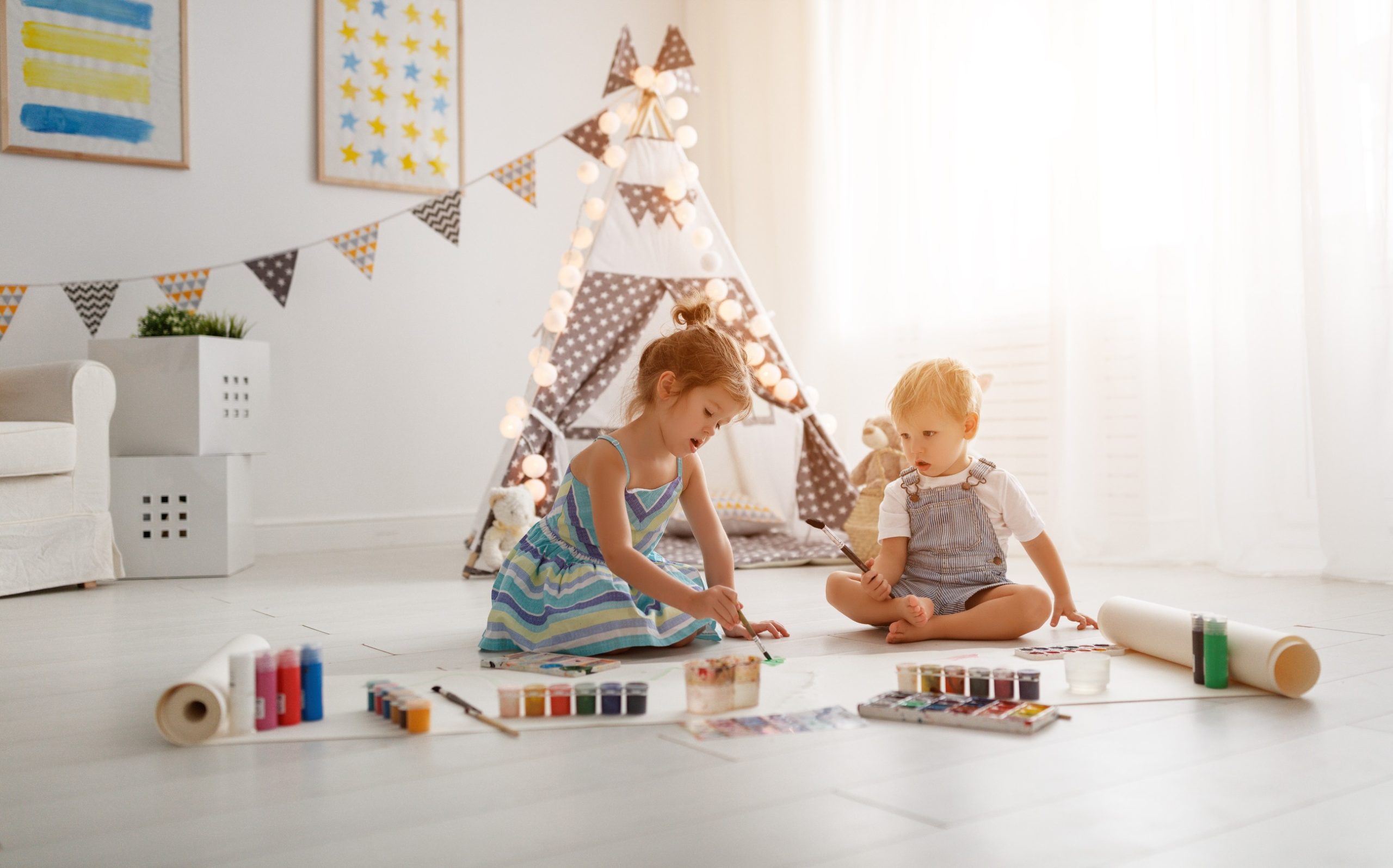Nurturing creativity in children is essential for their development, helping them solve problems, express themselves, and think outside the box. With the right approaches, parents and educators can create environments that encourage creative thinking. Exploring unique methods to foster creativity can lead to more engaged, innovative, and confident kids. Here are 15 unique ways to inspire and foster creativity in children.
1. Encourage Open-Ended Play
Open-ended play allows children to use their imagination without specific goals or instructions. Toys like building blocks, art supplies, and dress-up clothes offer endless possibilities. This type of play helps children develop problem-solving skills and think creatively. Giving children the freedom to explore and create their own rules fosters creativity.
2. Provide Diverse Art Supplies
A variety of art supplies can spark creativity in children. Offer materials such as paints, crayons, markers, clay, and recycled items. Experimenting with different mediums allows children to express themselves in multiple ways. Having access to diverse tools can inspire new ideas and artistic exploration.
3. Create a Creative Space
Designate a specific area in your home or classroom where children can create freely. This space should be stocked with art supplies, craft materials, and comfortable seating. A dedicated creative space encourages children to engage in artistic activities regularly. It becomes a sanctuary for imagination and innovation.
4. Read Together
Reading books together can inspire creativity by exposing children to new ideas and worlds. Choose a variety of genres and encourage children to imagine different endings or create their own stories. Discussing the stories can spark imaginative thinking and storytelling skills. Reading fosters a love for creativity and learning.
5. Encourage Curiosity
Fostering a sense of curiosity helps children explore and ask questions about the world around them. Answer their questions thoughtfully and encourage them to seek out answers independently. Curiosity-driven exploration can lead to creative discoveries and innovative thinking. Nurturing a curious mindset is key to fostering creativity.
6. Introduce Music and Dance
Music and dance are powerful tools for creative expression. Provide opportunities for children to listen to various types of music and move to the rhythm. Encourage them to create their own dances or play simple instruments. Engaging with music and dance can enhance creativity and emotional expression.
7. Allow for Free Time
Over-scheduled children may not have the opportunity to explore their creativity. Ensure they have ample free time to daydream, explore, and play. Unstructured time allows children to engage in creative activities at their own pace. Balancing structured activities with free time fosters creativity.
8. Engage in Outdoor Activities
Nature can be a great source of inspiration for creativity. Encourage children to play outside, explore natural environments, and collect items like leaves and rocks for art projects. Outdoor activities stimulate imagination and provide a break from routine. Nature’s beauty and complexity can spark creative ideas.
9. Support Creative Problem-Solving
When children encounter challenges, encourage them to come up with multiple solutions. Discuss various approaches and let them experiment with their ideas. This practice helps children develop critical thinking and creative problem-solving skills. Supporting creative solutions builds confidence and resilience.
10. Limit Screen Time
Excessive screen time can stifle creativity by providing passive entertainment. Set limits on screen use and encourage active, hands-on activities instead. Interactive play and exploration promote creative thinking more than passive consumption. Finding a healthy balance between screen time and creative activities is crucial.
11. Model Creativity
Children often imitate the behavior of adults around them. Show your creativity by engaging in artistic activities, solving problems creatively, and thinking outside the box. Your enthusiasm for creativity will inspire children to explore their own creative potential. Modeling creative behavior reinforces its importance.
12. Encourage Storytelling
Storytelling is a powerful way to foster creativity. Encourage children to tell stories through writing, drawing, or acting them out. Provide prompts or start a story and let them continue it. Storytelling enhances imagination, communication skills, and creative expression.
13. Use Creative Games and Puzzles
Games and puzzles that require creative thinking can be both fun and educational. Choose games that involve building, problem-solving, or imaginative play. These activities challenge children to think creatively and find unique solutions. Creative games and puzzles are great tools for fostering creativity.
14. Celebrate Mistakes
Mistakes are often seen as setbacks but can be valuable learning opportunities. Encourage children to view mistakes as part of the creative process. Celebrate their efforts and discuss what they learned from the experience. Embracing mistakes helps children build resilience and creative confidence.
15. Encourage Collaborative Projects
Working with others can enhance creativity through shared ideas and teamwork. Encourage children to collaborate on art projects, stories, or building activities. Collaboration teaches them to appreciate different perspectives and combine their creative strengths. Team projects can lead to innovative and unexpected results.
Take Advantage of These Unique Ways to Foster Creativity in Children!
Fostering creativity in children requires a supportive environment, diverse activities, and encouragement. By implementing these unique methods, you can help children develop their creative potential and cultivate a lifelong love for imaginative thinking. Creativity is a vital skill that will benefit them in all areas of life, from problem-solving to personal expression. Inspire the next generation of innovators and artists by nurturing their creative spirits today.
Read More:
20 Creative Ways to Boost Your Child’s Intelligence
Catherine is a tech-savvy writer who has focused on the personal finance space for more than eight years. She has a Bachelor’s in Information Technology and enjoys showcasing how tech can simplify everyday personal finance tasks like budgeting, spending tracking, and planning for the future. Additionally, she’s explored the ins and outs of the world of side hustles and loves to share what she’s learned along the way. When she’s not working, you can find her relaxing at home in the Pacific Northwest with her two cats or enjoying a cup of coffee at her neighborhood cafe.
















